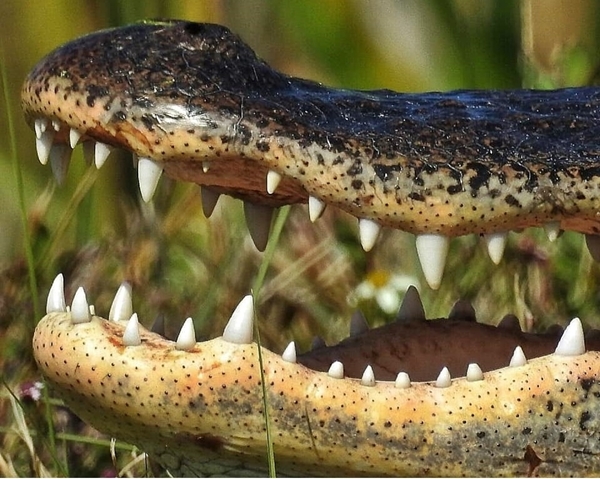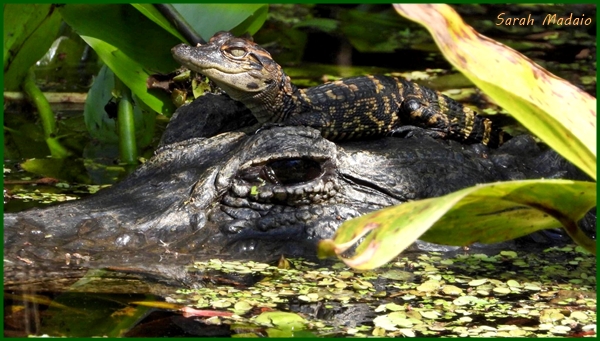
The first time I saw live alligators I was nine years old, on a family vacation from North Carolina to Florida. We visited all the tourist attractions of the time, including Silver Springs, Cypress Gardens, Daytona Beach, Sarasota Jungle Gardens, Miami Jungle Gardens (with the parrots), and a Seminole Indian Reservation.
At the Alligator Farm in St. Augustine dozens of large, fat, lazy-looking beasts crowded the lagoons under the elevated walk-ways as we peered down.

During the alligator “show” we witnessed how appearances belied abilities. When a man on a raised platform held a chunk of meat over the water, alligators vaulted up amazing distances above the water to snap the food.

Decades later I observed licensed trappers catching rogue gators with a long pole secured to a dock, equipped with a rope and huge hook embedded in some foul-smelling carrion dangled far above the surface so the nearby turtles couldn’t snag the bait before a gator, with its keen olfactory sense, could smell from far away. Alligator nostrils open to the top on the front tip of their heads, so even if they are mostly submerged, the olfactory and chemical signals reach the nasal cavity. Zeroing in on the odor, by the force of its tail, an alligator can launch itself up as much as six feet to grab the “tasty” treat.
In addition to smell, alligators have small, spotted bumps on the chin with a vast network of nerve endings that are specifically sensitive to pressure and vibration. Faces of alligators detect minute disturbances in the water and discriminate among objects using receptor nerves in their scales.

These tiny cells called integumentary sensory organs surround the teeth, mouth, and the snout making them extremely touch-sensitive. Cells are receptive to deflections as small as a fraction of the width of a human hair. The stimulated receptor cells send signals to the walnut-sized brain. They can pick up pressure and vibrations from far away in the water, which helps the alligators locate, capture, and examine prey even when visual and sound cues are absent. That is why it is important for swimmers not to splash.

It has been shown that alligators can orient themselves to ripples created by a single drop of water, even in complete darkness. Their sensory organs are ten times more sensitive than human fingertips. Female alligators carry hatchlings from the nest to the water in their mouths, their finely-tuned sense of touch helping to distinguish between prey (Bite!) and their own young (Don’t bite!).
<— Notice the baby in the mother’s mouth.

Opening its mouth while stalking food in the water, the alligator uses its sensory cells to detect disturbances from a moving object. Biting what it finds, examining it with its mouth to see if it’s edible, it will know whether to swallow; however, many inedible objects have been found in alligator stomachs ~ including dog tags!
